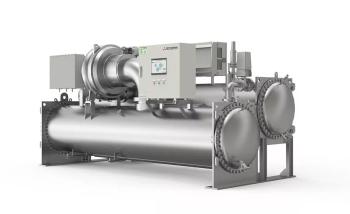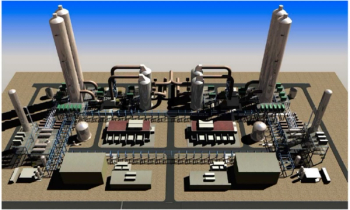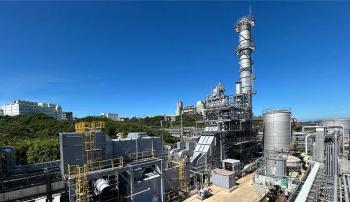
The price paid for reducing carbon emissions through wind power
Below is a brief by Robert Bryce of Manhattan Institute For Policy Research on the high cost of wind energy.
In 2008, the National Renewable Energy Laboratory (NREL), an arm of the U.S. Department of Energy, issued a report that said the United States could produce 20 percent of its electricity from wind by 2030.The report said that the United States is working toward generating more “energy that can be cost-effective, and replaced or ‘renewed’ without contributing to climate change or major environmental impacts.” Since the report was released, the wind industry, along with numerous politicians and environmental groups, has promoted wind energy as an integral part of the strategy to increase the use of renewable energy.
About two-thirds of the U.S. population now face RPS mandates—29 states and the District of Columbia have passed rules requiring that varying amounts of electricity used by consumers come from renewable sources. Those mandates cannot be met just with solar energy, which, despite enormous growth in recent years, remains a tiny player in the renewable sector. (In 2010, the United States produced more than 70 times as much electricity from wind as it did from solar.) Therefore, if policymakers want to comply with the mandates, wind energy will be the primary source of renewable generation.
The Obama administration is providing money for numerous wind projects. In August, the Department of Energy finalized a $102 million loan guarantee for a 50-megawatt wind project in Maine. That deal follows the June announcement of a conditional loan guarantee for a $135 million, 99-megawatt wind project in New Hampshire. In announcing the Maine deal, Energy Secretary Steven Chu said that it was part of the administration’s goal of “doubling clean energy produced in America by 2035.” He added that “clean energy is a major driver of American competitiveness, and investments like these are essential to secure our position as global leader.”
Behind the rhetoric about “clean” energy—and wind energy in particular—is the claim that using more of it will result in major reductions in carbon-dioxide emissions.
Last year, according to the Energy Information Administration (EIA), electricity generation in the United States totaled 4.1 trillion kilowatt hours. Of that amount, wind energy produced 94.6 billion kilowatt hours, or about 2.3 percent of total generation. For wind to expand so that it could supply 20 percent of U.S. electricity consumption, it would require a nine-fold increase in the size of the installed wind generation base, which, at the end of 2010, stood at about 40,000 megawatts of capacity.
Therefore, meeting the “20 by ‘30” goal would likely require the United States to obtain about 360,000 megawatts of wind-generation capacity. That’s a huge amount given that the total installed electric-generation capacity in the United States (from all sources, i.e., coal, natural gas, nuclear, hydro, etc.) is about 1 million megawatts.
The land requirements for 360,000 megawatts of wind-generation capacity would be substantial. The Roscoe Wind Complex in Texas, one of the world’s largest wind projects, has a capacity of 781.5 megawatts and covers about 154 square miles—about 0.2 square miles per installed megawatt of wind capacity. Using Roscoe as an example, then, 360,000 megawatts of capacity would require about 72,000 square miles of land to be occupied with wind turbines.
That area, if taken together, would rank as the 17th-largest state in the country, just ahead of North Dakota, which has 69,000 square miles. Put another way, that much land is equivalent to nearly ten New Jerseys. Few people could live on that 72,000 square miles because the noise (including infrasound) generated by the wind turbines is so disruptive. The deleterious health effects of wind-turbine noise have been documented by health professionals in the United States, Australia, New Zealand, and Canada.
Even if we assume that the installation of massive amounts of new wind capacity poses no health risks, and creates no conflicts with rural landowners, the costs of attempting to achieve the “20 by ‘30” goal will be staggering. The latest data from the EIA put the cost of installing one megawatt of wind-energy capacity at $2.43 million. (Note that this is a major increase over the estimate of $1.7 million per megawatt used by NREL in its 2008 report.) The cost of locating wind turbines offshore will be even higher. The latest EIA estimate for installing one megawatt of wind-generation capacity offshore is $5.97 million. (Here, too, the cost is increasing, not decreasing. In 2009, EIA’s offshore estimate was $3.4 million per megawatt.)
The United States has already spent about $68 billion installing the 40,000 megawatts of wind capacity now in place. Installing an additional 320,000 megawatts of wind power at $2.43 million per megawatt will cost the United States about $777.6 billion, or about $44.7 billion every year for the next 19 years. (As noted above, if policymakers prefer to pursue offshore wind, the annual total would be more than double that sum.)
An allocation of $44.7 billion per year would exceed the current combined budgets of the Environmental Protection Agency, Commerce Department, Treasury Department, and Interior Department. It’s not clear how such a program would be funded, however, since the federal government has no money to spare. State governments are also in financial peril. According to the Center on Budget and Policy Priorities (CBPP), a nonpartisan research and policy institute, the states had a combined budget shortfall of $130 billion for fiscal year 2011. In 2012, the CBPP expects the combined shortfall to be $103 billion, with another $46 billion shortfall looming in 2013.
Adding the $68 billion spent on existing wind generation capacity to the $777.6 billion cited above produces a total $845.6 billion. But that figure doesn’t include any money for the gas-fired generation capacity that will be needed to counteract the intermittency of the wind. Nor does it include any money for the construction of the additional transmission lines that will be needed to carry the electricity from windy rural areas to customers in distant cities.
Building new transmission capacity will be extremely expensive. For instance, Texas alone is planning to spend about $7 billion on new transmission capacity for wind energy. Adding the expected transmission costs in Texas to the sum mentioned above (while ignoring the additional transmission costs and gas-fired generation costs that will be incurred in other states) shows that achieving the “20 by ‘30 goal” will cost more than $850 billion, or about $7,548 for each U.S. household.
Potential Carbon-Dioxide Reductions
The Global Wind Energy Council (GWEC), an industry group, maintains that reducing the amount of carbon dioxide going into the atmosphere “is the most important environmental benefit from wind power generation.” For its part, the American Wind Energy Association (AWEA), a national trade association, says “there is no need to wait for a new climate solution. Wind power is one of only a few near-term options to reduce emissions.” In its 2008 report, the NREL claimed that if the United States were to derive 20 percent of its electricity from wind, it “could avoid approximately 825 million metric tons of carbon dioxide in the electric sector in 2030.”
How does that 825 million tons of carbon dioxide compare with global emissions? In 2010, global carbon-dioxide emissions totaled 33.1 billion tons. Thus, if the United States were somehow able to instantly increase its wind-generated electricity to 20 percent of total consumption, doing so might reduce global emissions by about 2.5 percent. But it is unlikely that global emissions will be the same in 2030 as they were in 2010. By 2030, the International Energy Agency (IEA) expects global emissions will total about 40.2 billion tons. Thus, the 825 million tons that NREL claims might be reduced by achieving the “20 by ‘30” goal will result in a global reduction of just 2 percent.
Therefore, to justify a total investment of $850 billion in wind, U.S. policymakers would have to agree that reducing carbon dioxide in the year 2030 is worth spending $1,030 per ton. Of course, that amount would not be spent all at once. Instead it would be allocated over the coming 19 years and would be, in effect, a carbon tax set at $54 per ton.
However, the actual cost may be somewhat lower. In its 2008 report, NREL claimed that only 305,000 megawatts of wind capacity would be needed to meet the “20 by ‘30” goal. Recall that the United States has built about 40,000 megawatts of wind capacity at a cost of about $68 billion. Thus, building an additional 265,000 megawatts of wind capacity (again, at $2.43 million per megawatt) at a cost of $644 billion, would lead to a total cost of $712 billion, thereby implying that cutting one ton of carbon dioxide by 2030 would cost about $863. Spread over the next 19 years, the cost would be the equivalent of a carbon levy set at $45 per ton.
Achieving the “20 by ‘30” goal will have a significant impact on electricity rates. In 2007, Steven Hayward and Kenneth Green of the American Enterprise Institute (AEI) estimated that a $15 carbon tax would likely increase the cost of coal-fired generation by about $0.0163 per kilowatt-hour. Therefore, we can assume that a carbon levy of $54-per-ton could increase electricity rates in coal-reliant regions by about $0.058 per kilowatt-hour. That’s a major increase given that the average price of electricity for residential consumers in the United States is currently $0.12 per kilowatt-hour.
Put another way, if the United States were to achieve the “20 by ‘30” goal, U.S. residential electricity prices in coal-dependent regions could increase by about 48 percent over current levels. If we use the lower range of wind costs outlined by NREL in its 2008 report, and assume that reducing a ton of carbon by 2030 will cost $45 per year, the increase in electricity costs in coal-dependent areas will amount to about $0.049 per kilowatt-hour. That would result in an increase of 40 percent over current levels for residential customers in those regions.
These higher electricity costs will likely accelerate the pace of electric rate increases now underway around the country. Since 2004, the average cost of residential electricity has gone from $0.0895 per kilowatt-hour to $0.1218 per kilowatt-hour, an increase of 36 percent.
A Comparison of Existing Carbon-Tax Regimes
Achieving the “20 by ‘30” goal would create a carbon tax—at $45 or $54 per ton—that would be far higher than similar levies being imposed by other regulatory jurisdictions. The only extant carbon-pricing regime in the United States, the Regional Greenhouse Gas Initiative (RGGI), a carbon market established by 10 states in the eastern part of the country, recently sold allowances for $1.89 per ton. (Each allowance gives the owner the right to emit one ton of carbon.) And RGGI, America’s first carbon market, is faltering. In May 2011, New Jersey governor Chris Christie announced that his state would be quitting the program. Christie said the program “is not working as it was intended to work. It’s a failure.”
The California Carbon Allowance cap-and-trade system began trading in August 2011 at a price of $17 per ton. But the program will not launch until 2013. And while the trading now underway will help market participants to structure forward deals and consider compliance strategies, it remains to be seen how the allowances will be priced when covered entities must begin actually complying with the cap-and-trade system.
In mid-2012, the Australian government is to begin imposing a carbon tax of about $24 per ton on major industrial plants. That levy, which is being fought by Australia’s big industrial users, is scheduled to rise by 2.5 percent per year until 2015, after which the country expects to switch to a carbon-trading system. Meanwhile, in Europe, the price of carbon allowances under the European Union’s Emission Trading Scheme is falling rapidly as the region’s economic troubles have become more pronounced. In early May, the cost of a one-ton carbon allowance was more than $24. By mid-October, that allowance was trading for about $14.
Newsletter
Power your knowledge with the latest in turbine technology, engineering advances, and energy solutions—subscribe to Turbomachinery International today.





